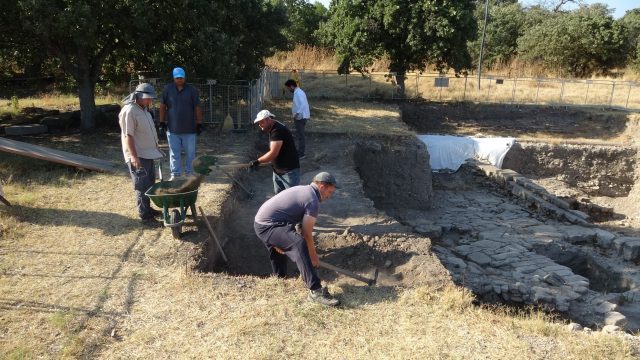Excavations at the ancient site of Troy, famed for the Trojan Wars and a 5,600-year-old civilization, are focusing on uncovering traces of the Trojan War in the 2024 season.
Rüstem Aslan, head of the Troy excavation and a faculty member at Çanakkale Onsekiz Mart University (ÇOMÜ), explained, “We are currently digging in a Late Bronze Age area that includes a gateway and a city square. We anticipate discovering significant finds in the coming weeks. Our main objective is to gather archaeological data on the Late Bronze Age, Homer’s Troy, and potentially the Trojan War.”
Situated in Tevfikiye village, Çanakkale, the Troy site was inscribed on UNESCO’s World Heritage List in 1998. The site, rebuilt multiple times due to wars, fires and earthquakes, attracts thousands of tourists annually. The Troy Museum, which opened in 2019, showcases nearly 2,000 artifacts from the site. Excavations, supported by the Ministry of Culture and Tourism, ÇOMÜ and sponsored by Içdaş, continue throughout the year, often yielding significant discoveries.
In 2024, research is focused on the Hellenistic Roman Agora area, investigating the large Troy Castle and its connection to the Late Bronze Age Southern entrance linked to Homer’s Troy. The team is also exploring a gateway and city square from the Late Bronze Age for potential evidence of the Trojan War.
Aslan stated, “Excavations at Troy in 2024 are progressing with the support of the Ministry of Culture and Tourism, ÇOMÜ, and Içdaş. This year marks the 160th anniversary of the Troy excavations. Since Frank Calvet began in 1863, followed by Heinrich Schliemann, Wilhelm Dörpfeld, Carl W. Blegen and Manfred Osman Korfmann, the site has been a focal point for archaeological research. Our goal is to address the many questions raised over these years, particularly regarding the existence of a lower city corresponding to Homer’s Troy. Earlier reports doubted whether the site matched Homer’s descriptions, but Korfmann’s work confirmed a lower city from the Late Bronze Age.”
“We are currently exploring the Agora, a Hellenistic Roman area, to gain insights into the archaeological context outside the large Troy Castle and to build on Korfmann’s findings. Previous excavations suggested the presence of a lower city and a Southern Sacred area, but we are focusing on potentially overlooked artifacts. Our work involves excavating a gateway and city square from the Late Bronze Age, and we expect to make significant discoveries in the coming weeks. Our primary objectives are to gather data related to the Late Bronze Age, Homer’s Troy, and possibly the Trojan War,” he said.
“Our work continues in the Agora area, specifically studying the Southern Gate of Late Bronze Age Homer’s Troy. Previous work by Blegen in the 1930s was incomplete and unpublished. We aim to enhance our understanding of the city plan and the city square from this period, as such structures are poorly documented in Anatolia, and to search for evidence of the Trojan War,” he remarked.





